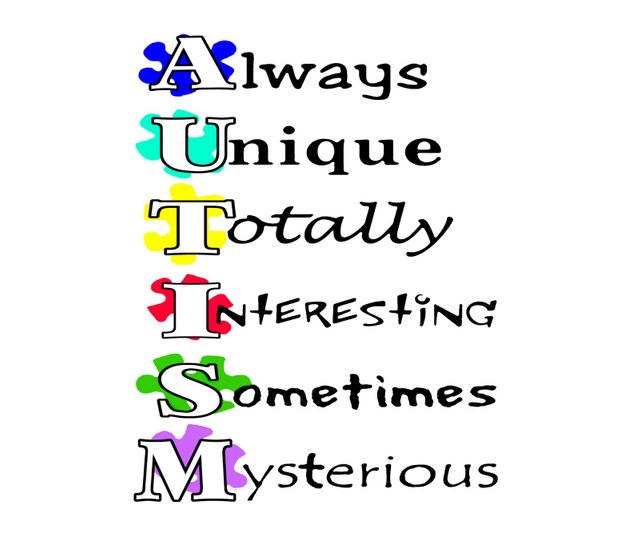There is more to Autism than you may think
Autism is a complex syndrome of childhood in which intellectual growth is uneven and social development is impaired. The cause is unknown, but it has been classified as a neurophysiological disorder which seems to be on the rise lately and it should be completely understood by caregivers and teachers.

Common characteristics include unresponsiveness, inability to speak or communicate and understand, refusal to seek or accept comforting and an unusual insistence upon routines. For example, autistic children often make repetitive body movements and even the most trivial change in their physical environment or routine can provoke rage or extreme anxiety. Some autistic children mimic sounds or develop intelligible speech patterns and some are mute. There may also be seizures involved.
Parental behaviour has no bearing on it, though some cases have been linked to rubella contracted before birth, hereditary metabolic disorders, encephalitis and meningitis, but not everyone with autism can be linked to one or even any of these. Sometimes autism develops in children who have appeared to be normal, but then inexplicably regress. Autistic boys outnumber girls at least two to one.
A number of autistic children appear to have low IQ's, others are normal, and then there are those with extreme intelligence but cannot adjust socially. Occasionally, an autistic child will have an unusual talent in mathematics or art.
Although babies may show some symptoms of autism, the problem usually is not diagnosed until about the age of three when it becomes clear that the child's speech is delayed or abnormal. A specialist in childhood developmental disorders may administer psychological tests, but testing is difficult if the child does not yet speak or is intellectually impaired.

Because there is no cure for autism, treatment focuses on trying to help a child develop language and social skills. This usually entails a combination of speech and behavioural therapy, special education and, in some cases, medication. Art therapy, Dance and Music therapy as well as Pet therapy has also proven to be successful to help the autistic children find a means of self-expression.
The good news?
Some autistic children eventually become self-sufficient, although most continue to require a sheltered environment. Teachers and parents can help them to do this by means of the following:
Teaching Verbal Skills: This should be done in brief, one-on-one sessions in which the child is encouraged to communicate verbally. Because autistic children learn by rote, a single word or concept must be repeated many times in the same way. Children who cannot speak are taught to communicate through body language, art or other creative therapies. Special education programmes which use computers to foster communication skills also appear to be promising.
Teaching Social Skills: Parents can apply many tactics used by professionals to encourage an autistic child to break out of self-imposed isolation. Plan activities which are simple and unthreatening, such as listening to music or dancing together. In all activities, go slowly, breaking each task or skill into small steps.

Resources:
What is autism?
Autism - Wiki

Some people have said that I have things like autism and other things. Good article here. Thanks.